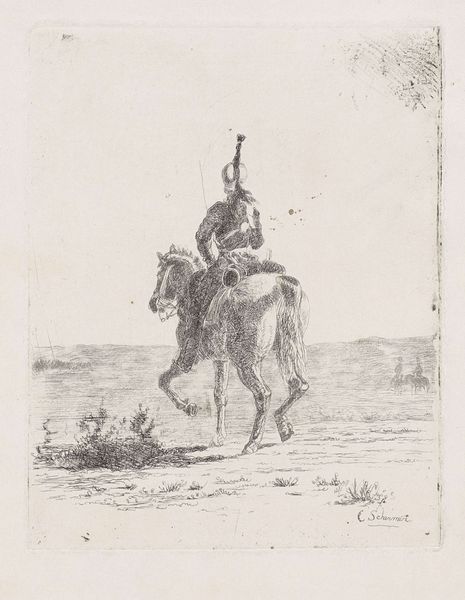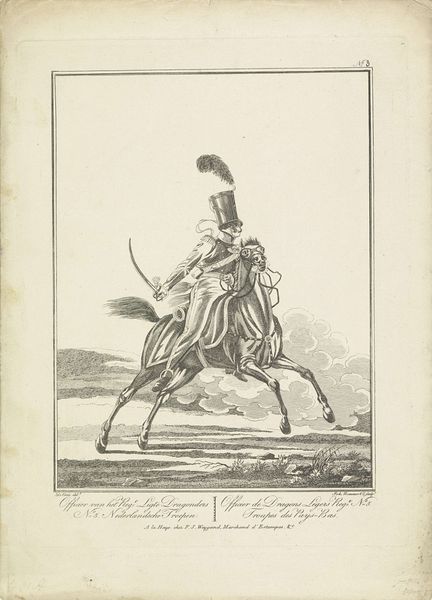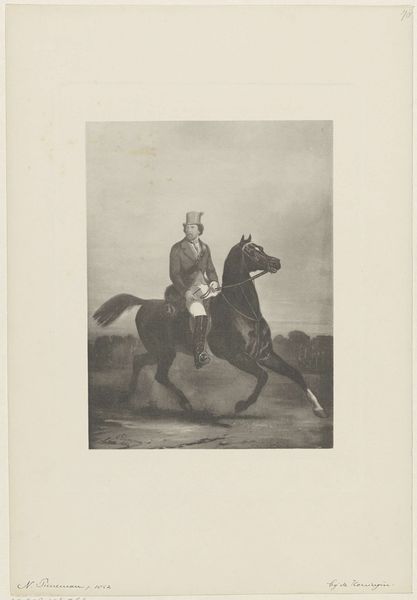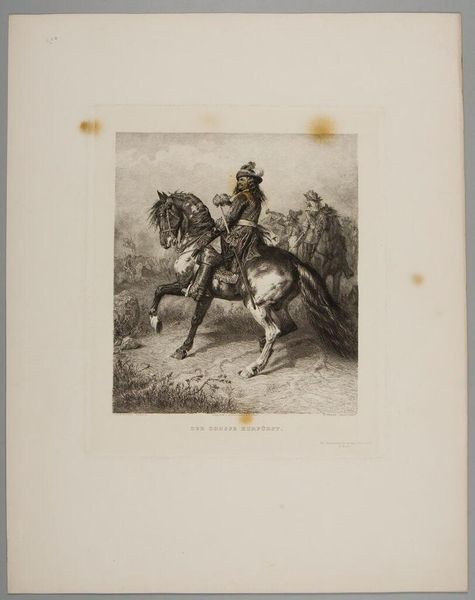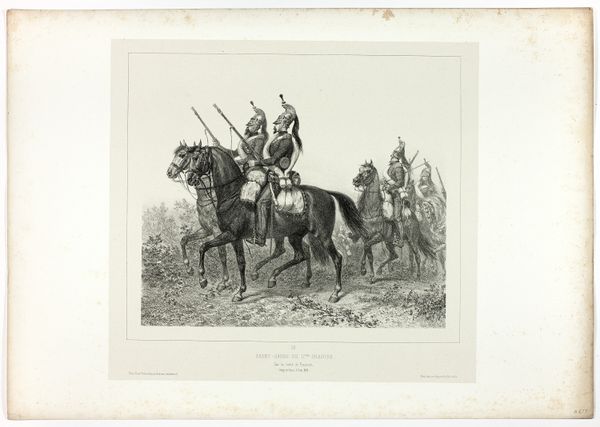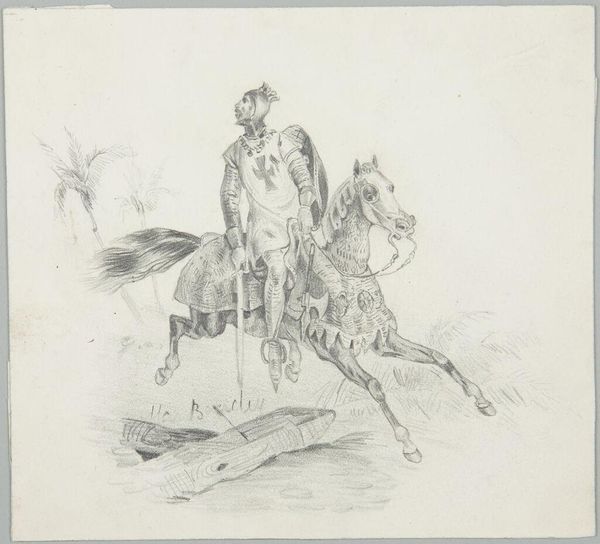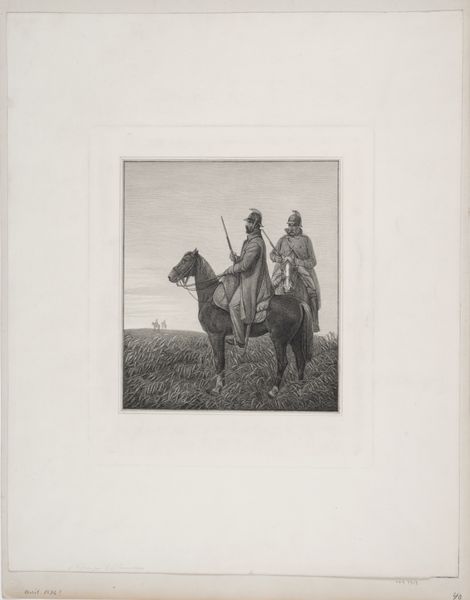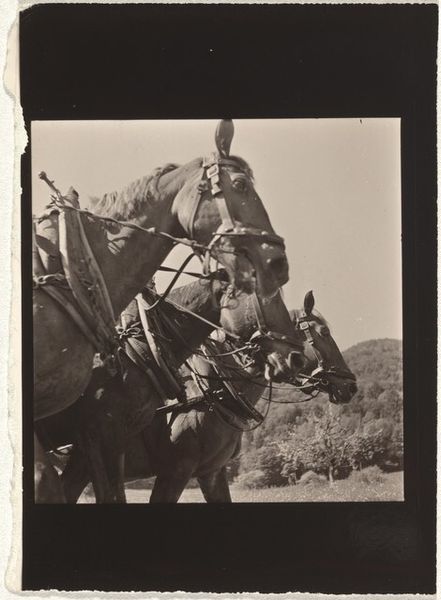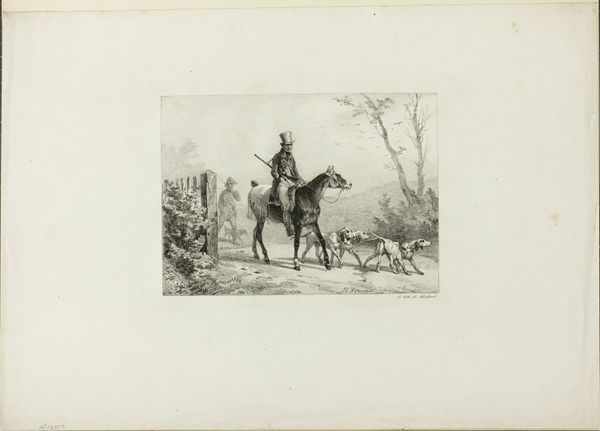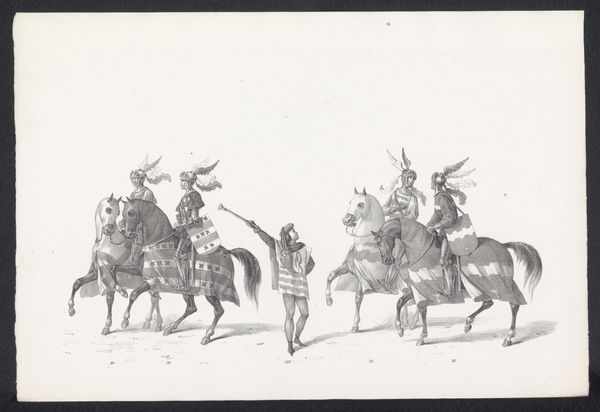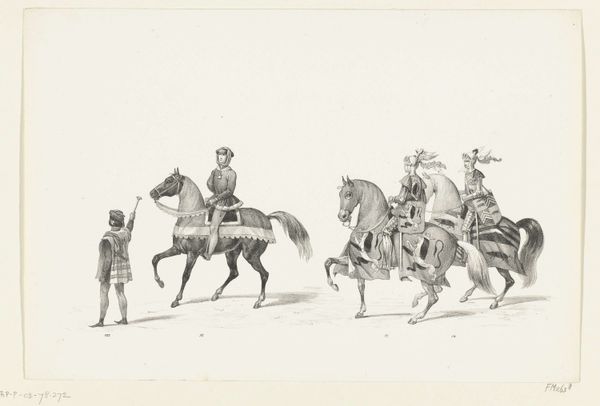
Huzaar te paard, een charge uitvoerend, met een pistool in zijn hand 1800 - 1841
0:00
0:00
joannesbemme
Rijksmuseum
drawing, print, etching, engraving
#
drawing
# print
#
etching
#
landscape
#
figuration
#
genre-painting
#
history-painting
#
engraving
Dimensions: height 316 mm, width 240 mm
Copyright: Rijks Museum: Open Domain
Editor: This is "Huzaar te paard, een charge uitvoerend, met een pistool in zijn hand" by Joannes Bemme, likely made sometime between 1800 and 1841. It’s an engraving and etching on paper, depicting a mounted soldier charging into action. I'm struck by the soldier's intense forward motion, emphasized by the landscape’s emptiness. What historical narratives do you think this work speaks to? Curator: Well, considering the period and subject matter, we can view this print through the lens of evolving military identities and the romanticized image of warfare that was becoming increasingly popular. This idealized image of the Hussar contrasts with the brutal realities of the Napoleonic Wars happening around that time. This image seems geared to creating popular support. Editor: Creating support through imagery, how so? Curator: Note how the artist presents the soldier. Is he weary, injured, or in a ragged uniform? No, Bemme meticulously renders him as heroic and almost theatrical. The print could be seen as part of a broader effort to cultivate patriotism, promote military service, and justify political actions of the period. How do you see it connecting to the tradition of history painting? Editor: It strikes me that this historical painting, in print form, made the glory of battle more accessible to a wider audience beyond the wealthy elite who typically commissioned paintings. The print transforms history into a relatable and reproducible commodity, circulating its message further. Curator: Precisely! And who benefits from this romanticized image? Does this image serve all of society, or only a segment? Considering such factors can challenge traditional art historical narratives. Editor: It definitely seems designed to elicit a specific emotional response, potentially obscuring the harsh realities of war. Thinking about its circulation really adds a layer of social complexity that I hadn't considered before. Thank you! Curator: It's fascinating to see how artistic choices intersect with broader socio-political strategies, isn't it? It prompts you to consider who controls those narratives and why.
Comments
No comments
Be the first to comment and join the conversation on the ultimate creative platform.
